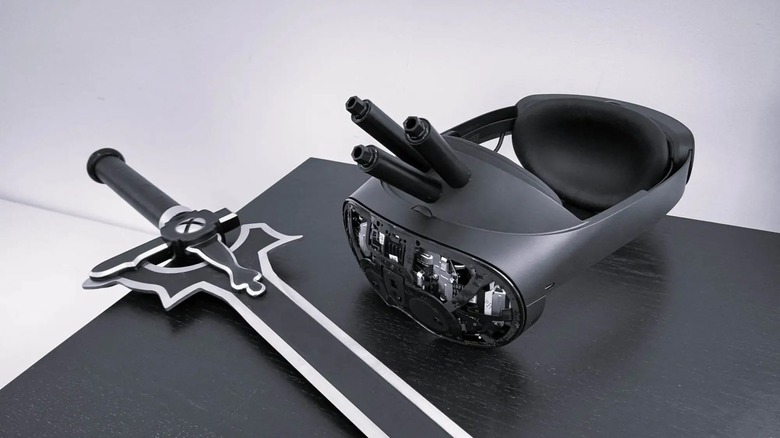Oculus Founder Designs VR Headset That Murders You For Losing
Since they first broke onto the scene in the late 1970s, video games have captured the collective imagination of millions. While there are no clear answers to why people continue to be enthralled by this seemingly frivolous activity, the global gaming industry continues to rake in oodles of money. With revenues exceeding $159 billion in 2020, the global gaming industry was forecasted to be three times the size of the music industry (Via WEF) and four times the size of the worldwide film industry at the time.
For many, gaming started as a pastime activity with the sole purpose of keeping them entertained. However, advancements in computer graphics, display technology, virtual reality (VR), and processing power have ensured the proliferation of games that not only entertain people but transport them into a virtual world where the barrier between reality and fiction is hazy — or in some cases — don't exist at all.
For many, the alternative reality readily accessible from their VR headsets makes for a perfect escape from the travails of their monotonous lives. However, if Palmer Luckey, widely considered the father of modern virtual reality, has his way, players taking their VR gaming a bit too seriously could end up losing their lives. Palmer claims to have designed a VR headset that will kill the user for real if they end up dying in the game they're playing.
Why make a VR headset that kills?
Palmer's killer VR headset is a tribute to the NerveGear — a fictional VR headset made famous by the famous anime series Sword Art Online (SAO). In the series, players who put on the NerveGear will not be able to remove the headset until they successfully ascend a 100-floor tower. If they try to remove the headset mid-stage or fail the level, they die in real life.
While we understand that there is a lot to unpack here, the basic premise of Palmer's Killer VR headset comes from the idea of tying one's real life to their virtual avatar. Palmer believes that allowing people to do so will force them to completely rethink how they conduct themselves in the virtual world. With actions performed in the virtual world now coming with real-world implications, the feeling of reality offered by Palmer's killer headset should far outclass the perception of reality offered by games with ultra-realistic graphics. Palmer goes on to say how this aspect of video game mechanics has never been explored.
Palmer's fixation with video games with physical consequences isn't new. He has previously talked about the concept — making audacious comparisons with real-world sporting activities like motorsports and athletics that could potentially result in the deaths of athletes. However, his detractors have tried to counter his view by pointing out that adding any real consequence to computer games would be a manufactured construct, given that the act of gaming itself does not pose any inherent risk.
Almost two years after he tweeted about this concept, Palmer revealed that he is halfway into making his own version of the Nerve Gear.
How does Palmer's VR headset kill?
While Palmer Luckey takes inspiration from SAO's NerveGear, the killing mechanism on his headset will completely differ from that of NerveGear. In SAO, the NerveGear used powerful microwave emitters that essentially fried the brains of the wearer. These microwave emitters were also tamper-proof, going off even if users tried to remove the headset without authorization. Because Palmer couldn't get such a mechanism to work without plugging the headset into large pieces of machinery, he opted for a much simpler but equally effective solution.
Palmer's killer VR headset uses three explosive charge modules, which he claims to have sourced from a different project (Palmer Luckey is also a well-known defense contractor). His way of getting them to work is to tie the charges to a narrow-band photosensor that will be triggered when it detects an appropriate signal. For example, developers can make the charges go off when the photo sensor detects the VR screen flashing red at a specific frequency. This flashing screen — which will be part of the "game over" screen — will set the explosives off, instantly destroying the user's brain.
Palmer goes on to add that he is still on the path to perfecting his system and that he has plans to develop an anti-tamper mechanism for his VR headset that would be inspired by the NerveGear. He claims so far, he has only been able to figure out how his headset will kill people and that the actual VR headset part of the equation is several years away from reality.
All things said, even if Palmer makes a working prototype of his outrageous killer VR headset, the huge regulatory — and societal — roadblocks awaiting him would likely be insurmountable.


